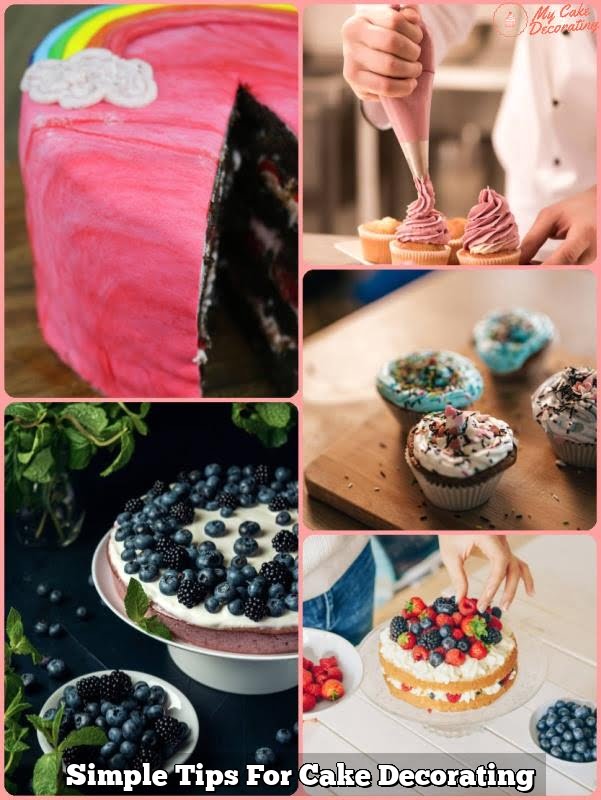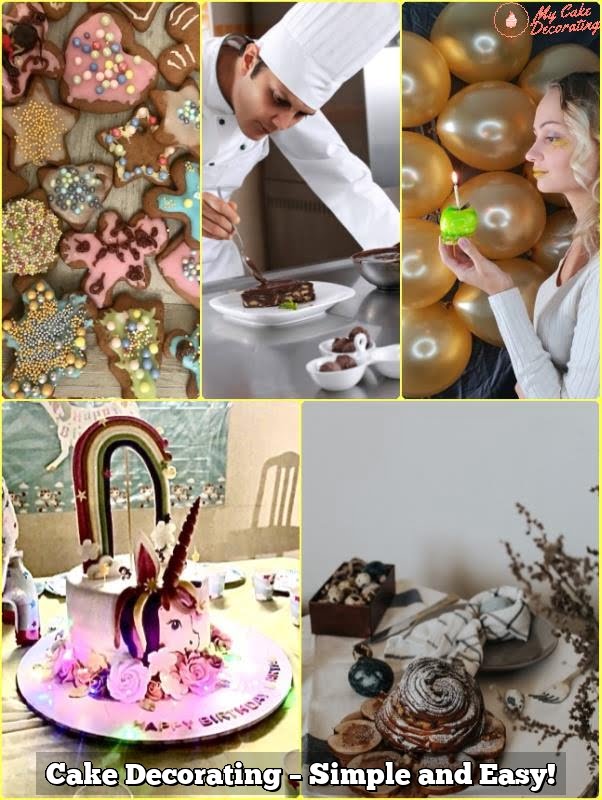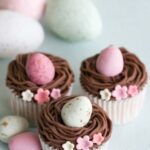Cake decorating has become increasingly popular, with the allure of beautifully designed cakes captivating bakers and dessert enthusiasts alike. From elaborate wedding cakes to themed birthday creations, the art of cake decorating allows individuals to express their creativity and showcase their baking skills. However, for beginners or those with limited time, the idea of creating intricate designs may seem daunting. That’s where the beauty of simple decorating techniques comes in.
Simple decorating cake techniques offer a practical and accessible approach to cake design. Whether you’re just starting out or have a busy schedule, these techniques can help you create stunning cakes without feeling overwhelmed. By mastering simple decorating cake techniques, you can elevate your baking skills and surprise your friends and family with visually appealing and delicious creations.
In this article, we will explore the art of simple decorating cakes in depth. We’ll discuss essential tools and ingredients that every beginner should have in their arsenal, as well as different types of cake bases that work best for simple decorating techniques.
We’ll also walk you through step-by-step guides on leveling and stacking cakes properly, achieving a flawless crumb coat, mastering buttercream frosting techniques, incorporating colors and flavors into your designs, adding decorative toppings and accents for that wow-factor, troubleshooting common challenges that arise during cake decoration, and inspiring you on your cake decorating journey.
Whether you’re an aspiring baker or simply looking to enhance your baking repertoire, the world of simple decorating cake techniques awaits. Get ready to delve into this artistic realm and discover how easy it can be to create stunning cakes that taste as good as they look. Let’s unleash our creativity together.
Essential Tools and Ingredients for Simple Decorating Cake
When it comes to simple decorating cake, having the right tools and ingredients is essential for achieving professional-looking results. Whether you are a beginner or an experienced baker looking to enhance your skills, here is a comprehensive list of must-have tools and ingredients to get you started.
Firstly, a good set of cake decorating tools is crucial for creating beautiful designs. These may include piping bags and tips for adding buttercream details, offset spatulas for smoothing frosting, a turntable for easy rotation while working on the cake, and a cake leveler for achieving even cake layers. Additionally, invest in quality food coloring gels that provide vibrant and consistent colors, as well as various-sized piping tips for different designs.
In addition to tools, sourcing high-quality ingredients can make a significant difference in the appearance and taste of your cakes. Opting for real butter instead of margarine or shortening can result in richer flavor and smoother texture. Using fresh eggs instead of powdered eggs contributes to a more moist and delicious outcome. When it comes to flour, choosing cake flour or a combination of all-purpose flour with cornstarch yields lighter and tender cakes.
Lastly, exploring different types of cake bases that work best for simple decorating techniques is important. Butter-based cakes like vanilla or chocolate are versatile options that complement various flavors and decorations. Sponge cakes are light and airy, making them suitable for layered cakes with delicate fillings. Consider experimenting with flavors like lemon or red velvet to add variety to your repertoire.
By equipping yourself with these essential tools and ingredients, you will be armed with everything you need to create beautifully decorated cakes using simple techniques. Whether you are just starting your baking journey or looking to up your game, these foundational elements will serve as the building blocks upon which you can develop your skills further in the world of cake decorating.
Mastering the Basics
The success of a beautifully decorated cake starts with a solid foundation. In this section, we will guide you through the essential steps of leveling and stacking cakes to ensure a professional-looking end result.
Importance of Properly Leveling Cakes
Leveling cakes is a crucial step in cake decorating as it creates an even surface for stacking and prevents your finished cake from looking lopsided or uneven. To level your cake, start by placing it on a sturdy surface and using a long serrated knife or cake leveler to carefully remove any domed or uneven portions from the top. Keep the knife parallel to the surface and cut slowly to achieve an even result.
Step-by-Step Guide for Evenly Leveled Cakes
To level your cakes evenly, follow these step-by-step instructions:
- Allow your baked cakes to cool completely before leveling.
- Place your leveled cake on a turntable for ease of cutting. If you don’t have one, use a rotating plate.
- Start at one end of the cake and insert the serrated knife about 1 inch into the cake.
- With gentle sawing motions, move the knife horizontally across the cake while maintaining an even pressure.
- Continue moving along the circumference of the cake until you reach back to your starting point.
- Gently lift off the excess portion as you go, checking for any remaining uneven spots.
- Repeat this process for each layer of your stacked cake.
Tips for Securely Stacking Cakes
Stacking cakes requires attention to detail and careful balancing to ensure stability and prevent collapsing structures. Follow these tips for securely stacking cakes:
- Prepare your moistening syrup or simple syrup beforehand to add moisture and stabilize each layer.
- Begin with a clean surface and place a dollop of frosting or buttercream on your cake board or stand to hold the bottom layer in place.
- Using an offset spatula, spread a thin and even layer of frosting or buttercream on top of the bottom layer.
- Gently place the second leveled cake layer on top, aligning it with the bottom layer.
- Repeat the process for each subsequent layer, remembering to add an even layer of frosting or buttercream in between.
- Use a cake leveler or skewer inserted through the layers to check that they are vertically aligned.
- To ensure stability, consider inserting wooden dowels or plastic straws into the base tier before stacking additional tiers.
By mastering these basics of leveling and stacking cakes, you’ll be well on your way to creating a solid foundation for all your simple decorating cake projects. With a leveled and securely stacked cake, you can confidently move on to the next steps of crumb coating and decorating, knowing that your structure is stable and professional-looking.
Perfecting the Crumb Coat
The crumb coat is a crucial step in cake decorating that helps create a flawless base for decoration. It is the initial layer of frosting that locks in any loose crumbs and creates a smooth surface for the final layer of frosting.
Without a crumb coat, it can be challenging to achieve a polished and professional-looking cake. In this section, we will provide you with a step-by-step guide on how to achieve a perfect crumb coat and share techniques to smooth out any imperfections.
To start, ensure that your cake is completely cooled before applying the crumb coat. This will prevent the frosting from melting or sliding off the cake. It is also essential to have chilled frosting as it will make it easier to spread.
- Apply a thin layer of frosting: Using an offset spatula or a bench scraper, apply a thin layer of frosting all over the cake, making sure to cover the top, sides, and edges. The purpose of this first layer is to trap any loose crumbs.
- Chill the cake: Once you have applied the thin layer of frosting, place the cake in the refrigerator for about 15-20 minutes. This will allow the frosting to set and make it easier to add another layer without disturbing any crumbs.
- Apply a second layer of frosting: After chilling, take your cake out of the refrigerator and apply another thicker layer of frosting. Use smooth strokes with your offset spatula or bench scraper to evenly distribute the frosting.
- Smooth out imperfections: To create an even finish on your crumb coat, run a bench scraper or icing smoother along the sides and top edges of your cake while turning it on its stand or turntable. This will help smooth out any unevenness and fill in any gaps.
By following these steps, you can achieve a flawless crumb coat that provides an excellent foundation for further decoration. Remember that practice makes perfect when it comes to icing cakes, so don’t be discouraged if your first attempts are not flawless. With time and patience, you will improve your techniques and master the art of simple decorating cakes.
| Steps for Perfecting the Crumb Coat |
|---|
| 1. Apply a thin layer of frosting to trap loose crumbs |
| 2. Chill the cake for 15-20 minutes to set the frosting |
| 3. Apply a second thicker layer of frosting |
| 4. Smooth out imperfections with a bench scraper or icing smoother |
Easy Buttercream Techniques to Elevate Your Simple Decorating Cake
Buttercream frosting is a versatile and delicious choice for decorating cakes. It can be piped into intricate designs, used to create smooth finishes, or even transformed into textured patterns. In this section, we will explore easy buttercream techniques that will elevate your simple decorating cake to the next level.
Choosing the Right Buttercream
There are several types of buttercream that you can use for your simple decorating cake. Swiss meringue buttercream, Italian meringue buttercream, and American buttercream are all popular options. Swiss meringue and Italian meringue buttercreams are light and silky, while American buttercream is sweeter and easier to make. Consider the flavor you want to achieve and the specific needs of your design when choosing your buttercream.
Piping Techniques for Beautiful Borders and Designs
Piping is a classic technique that can add elegance and intricacy to your cake design. With a piping bag fitted with different tips, you can create borders, flowers, rosettes, ruffles, and more. Start with a round tip for borders or writing and gradually experiment with different shapes and sizes to achieve various designs. Practice on a separate surface before piping directly onto your cake to ensure precision.
Creating Smooth and Even Buttercream Surfaces
For those who prefer a modern and sleek finish on their simple decorating cakes, achieving a smooth buttercream surface is essential. After applying a crumb coat (as discussed in the previous section), use an offset spatula or bench scraper to spread an even layer of buttercream over the entire cake.
Use long strokes around the sides while rotating the turntable for seamless coverage. To achieve an ultra-smooth finish, dip an offset spatula in hot water regularly before smoothing out the surface.
By mastering these easy buttercream techniques, you can take your simple decorating cake from average to exceptional. The choice of buttercream, piping techniques, and achieving a smooth finish will greatly enhance the visual appeal of your cake. Remember to practice these techniques and unleash your creativity as you discover new ways to decorate with buttercream.
Playing with Colors and Flavors
Utilizing food coloring to bring life and vibrancy to your cake designs
One of the most exciting aspects of simple decorating cakes is the opportunity to play with colors and create eye-catching designs. Food coloring can be a game-changer when it comes to adding life and vibrancy to your cake creations. Whether you want a subtle pastel palette or a bold and vibrant design, food coloring allows you to achieve the desired effect.
To utilize food coloring effectively, start by selecting gel or paste food coloring over liquid ones as they are more concentrated and produce more vivid hues. When adding color, start with a small amount and gradually build up until you reach the desired shade. Remember that it is easier to add more color than to remove it, so go slow.
Consider using different techniques such as marbling or ombre effects for added visual interest. For marbling, simply drop different-colored batters into the cake pan randomly and use a toothpick or skewer to swirl them together gently before baking. To achieve an ombre effect, gradually add more food coloring to each layer of cake batter so that they have varying shades when stacked together.
Incorporating flavored fillings and frostings to enhance taste and surprise your guests
While visuals are important in cake decorating, taste should never be overlooked. By incorporating flavored fillings and frostings, you can elevate the overall taste profile of your simple decorating cake.
Consider experimenting with different flavors such as fruit purees, extracts like vanilla or almond, or even unconventional flavors like lavender or matcha. You can incorporate these flavors into both the filling between cake layers and the frosting on top.
When filling your cakes with fruit purees or curds, ensure that they are thick enough not to seep into the layers but still provide a burst of flavor with each bite. For frostings, balance sweetness with flavor intensity and aim for a smooth and creamy texture that compliments the cake.
Tips for selecting complementary color palettes and flavor combinations for impactful results
To achieve maximum impact with your simple decorating cake, it’s essential to select complementary color palettes and flavor combinations. This means choosing colors and flavors that work harmoniously together to create an overall pleasing experience.
When selecting a color palette, consider the occasion or theme of the cake. For example, a pastel palette may be perfect for a baby shower cake while bold primary colors can work well for a child’s birthday party. Look to nature, art, or even fashion trends for inspiration when deciding on a color scheme.
When it comes to flavor combinations, think about both contrast and harmony. Complementary flavors can help balance each other out and create a more complex taste experience. For example, pairing a tart lemon filling with a rich vanilla buttercream can create a delicious balance of sweet and tangy.
Overall, remember that creativity is key when playing with colors and flavors in simple decorating cakes. Don’t be afraid to experiment, mix and match different shades or tastes until you find the combination that truly speaks to you.
Adding Wow-Factor
When it comes to cake decorating, the final touches are what truly elevate a simple cake into a show-stopping masterpiece. Adding decorative toppings and accents is a fantastic way to add that wow-factor and make your cake truly memorable. In this section, we will explore some simple techniques for creating stunning decorative toppings and accents that will impress your guests.
One easy yet impressive technique is using edible flowers for decoration. Edible flowers not only add a touch of elegance to your cake but also provide a beautiful pop of color. You can find edible flowers at specialty grocery stores or online. Simply wash them thoroughly, remove any stems, and gently press them onto the surface of your cake. This technique is perfect for spring-themed cakes or weddings.
Another way to enhance the visual appeal of your cake is by incorporating dusting or shimmery finishes. Dusted finishes can be achieved by lightly sprinkling powdered sugar or cocoa powder over the top of your cake using a fine-mesh sieve. This adds an elegant touch and helps to highlight any textures or designs on the surface.
Shimmery finishes can be achieved by using edible glitter or luster dust, which creates a beautiful iridescent effect. Simply brush the glitter or dust onto selected areas of your cake with a clean pastry brush.
For those who love texture, consider incorporating fresh fruits, candy, or chocolate shards as decorative toppings. Fresh berries, sliced citrus fruits, or even kiwi slices can add both visual interest and juicy flavor to your cake.
Candy pieces such as sprinkles, mini chocolate chips, or crushed cookies can provide delightful bursts of color and crunchiness. Chocolate shards are made by pouring melted chocolate onto a lined baking sheet and then breaking it into irregular pieces once it has set – they add an artistic touch to any cake design.
If you’re feeling creative, everyday objects like stencils and toothpicks can be used to create unique designs on your cake. Stencils are a great tool for creating intricate patterns using powdered sugar or cocoa powder.
Simply place the stencil over your cake and gently tap the powdered sugar or cocoa powder over it, then carefully remove the stencil to reveal the design. Toothpicks can be used for making small dot patterns or for dragging through buttercream to create interesting textures.
By incorporating these simple techniques, you can easily take your cake decorating to the next level. Remember to have fun and experiment with different combinations of colors, flavors, and toppings. The possibilities are endless when it comes to adding that wow-factor to your cakes.
Troubleshooting Common Challenges in Simple Decorating Cake
Cake decorating can be a delightful and rewarding experience, but it’s not without its challenges. As you embark on your simple decorating cake journey, it’s important to be prepared for potential issues that may arise along the way. In this section, we will address some common challenges in simple decorating cake and provide helpful tips and tricks to overcome them.
One of the most frequent issues that decorators encounter is cracked frosting. This can occur due to various reasons, such as using a dry or crumbly frosting, applying too much pressure while smoothing the surface, or not properly preparing the cake before frosting. To avoid cracked frosting, make sure your buttercream is at the right consistency – smooth and spreadable.
If it’s too stiff, try adding a tablespoon of milk or cream at a time until you achieve the desired texture. Additionally, ensure that your cake is level and properly cooled before applying the frosting.
Uneven layers can also pose a challenge when decorating cakes. If your layers are not even, it can result in an unstable structure and difficulty achieving a professional finish. To level your cakes evenly, use a long serrated knife or cake leveler to carefully remove any domes or uneven surfaces.
Take your time and work with patience to achieve a flat surface for stacking. If your layers are still slightly uneven after leveling, you can use a little extra frosting between the layers to help compensate for any variations.
Another concern that decorators may encounter is collapsing structures, especially when working with multiple tiers or heavy decorations. It’s crucial to ensure stability and balance in these cases. Use dowels or bubble tea straws inserted into the bottom tiers to support the weight of upper tiers. These supports provide added structural integrity and prevent collapsing under pressure. It’s also important to consider the density of your cake – denser cakes tend to hold up better under heavier decorations.
By understanding these common challenges and implementing the provided tips, you can tackle any potential issues that may arise during your simple decorating cake endeavors. Just remember, practice makes perfect, and with each cake you decorate, you’ll continue to improve your skills. Don’t be discouraged by setbacks – embrace the learning process and let your creativity shine through your beautifully decorated cakes.
Conclusion
In conclusion, the art of simple decorating cake offers a world of possibilities for both beginners and busy individuals looking to elevate their baking skills. Throughout this article, we have explored the essential tools and ingredients needed for cake decorating, learned step-by-step techniques for leveling and stacking cakes, perfected the crucial crumb coat, mastered buttercream techniques, played with colors and flavors, added wow-factor with decorative toppings and accents, and addressed common challenges in cake decorating.
The value and accessibility of simple decorating cake techniques cannot be underestimated. By mastering these techniques, you can create stunning cakes that will impress your family, friends, and guests. But it’s not just about the end result – it’s also about unleashing your creativity and enjoying the process. Cake decorating is a journey that allows you to express yourself through edible art.
As you embark on your own cake decorating journey, remember that practice makes perfect. Don’t be discouraged if things don’t turn out exactly as planned at first. The learning process is part of the fun. With time and experience, your skills will continue to evolve. So experiment with different designs, flavors, and techniques – there are no limits to what you can create.
So go ahead – embrace the art of simple decorating cake and let your imagination run wild. Your delicious creations await.
Frequently Asked Questions
What is the easiest cake to decorate?
The easiest cake to decorate would be a simple sheet cake. With its flat surface and minimal edges, it provides a large canvas to work with.
Decorating a sheet cake can be as easy as spreading a layer of icing smoothly across the top and adding a few colorful sprinkles or piped lines for decoration. Additionally, sheet cakes can be easily adorned with edible images or decorations placed directly on top without the need for intricate piping or fondant work.
How to decorate cake in home simple?
Decorating a cake at home can be made simple by following a few key steps. First, choose your desired theme or color scheme for the cake. Selecting coordinating colors and decorations will help create a cohesive design.
Next, prepare your cake by ensuring it is cooled and leveled before applying the frosting. Using a buttercream frosting can make decorating easier, as it is more forgiving and can be smoothed with ease. To add simple decorations, consider using pre-made edible toppers, such as fondant shapes or edible flowers, which can easily be placed on top of the frosting for an instant decorative touch.
How to decorate a cake quickly?
When time is limited and you need to decorate a cake quickly, focus on utilizing quick techniques that still produce visually appealing results. One approach is to use ready-to-use store-bought items like colorful sprinkles, chocolate shavings, or edible glitter to instantly enhance the appearance of your cake without requiring much effort in terms of design skill or precision piping work.
Another helpful tip is to opt for “naked” or semi-naked styles where minimal frosting is used and the natural beauty of the cake layers are showcased with just a touch of icing between them. Additionally, consider utilizing edible flowers or fresh fruits strategically arranged on top of your frosted cake to create an effortless yet beautiful design in no time at all.

Welcome to my blog about home and family. This blog is a place where I will share my thoughts, ideas, and experiences related to these important topics. I am a stay-at-home mom with two young children. I hope you enjoy reading it! and may find some helpful tips and ideas that will make your home and family life even better!





